Exclusive Neuroject Article: Environmental sensors are tools employed to detect and oversee environmental quality. These compact yet potent devices have become indispensable in our mission to comprehend, safeguard, and sustain our surroundings. In 2024, these sensors have transcended their traditional roles, emerging as vital components in addressing contemporary challenges.
They play a pivotal role in addressing issues like climate change and intricacies in air and water quality, serving as diligent data collectors that inform critical decisions and fuel pioneering research. These are capable of gauging pollutants that endanger both human health and the environment. They detect metals, volatile organic compounds (VOCs), and biological contaminants to monitor water purity, air quality, and soil composition.
Governments, regulatory bodies, and local communities utilize this data to assess the state of the environment and identify environmental trends. Furthermore, certain environmental sensors are employed for weather and storm monitoring, measuring parameters like temperature, humidity, atmospheric pressure, and precipitation.
Air quality is assessed through measurements of temperature, humidity, and emissions. The integration of sensor networks and geographic information system (GIS) models provides valuable insights into pollution levels.
Presently, environmental sensors are integral to smart building monitoring, offering insights into living conditions and safety in various sectors, including construction, agriculture, healthcare, and disaster management. This article introduces environmental sensors, outlines their diverse applications, and explores their roles in different fields.
Table of Contents
What are Environmental Sensors?
Environmental sensors are devices or instruments designed to detect and measure various environmental parameters or conditions in the surrounding area. These are used to collect data about the environment, which can be crucial for monitoring and managing different aspects of the natural world and human-made systems.
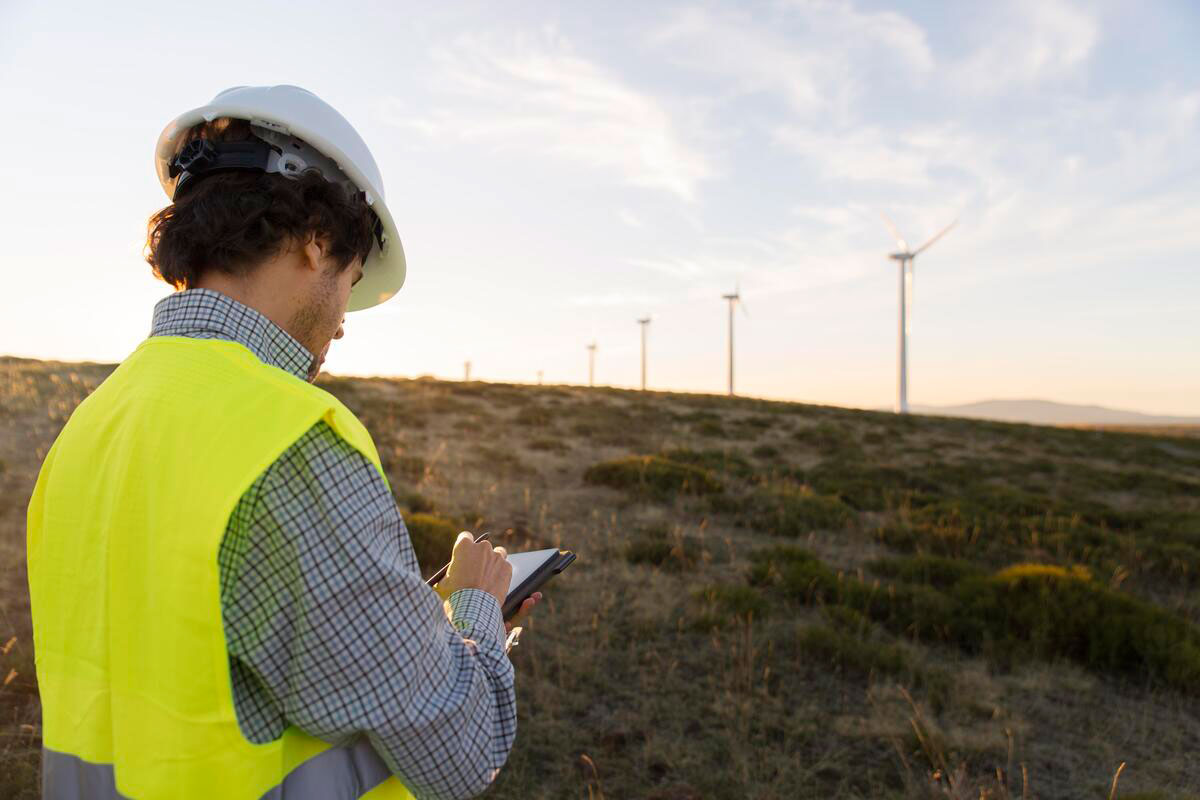
Why are Environmental Monitoring Sensors Used?
Environmental monitoring serves as a safeguard for both the public and the environment by detecting hazardous contaminants and pathogens. It plays a critical role in conducting environmental impact assessments and determining situations where human activities may pose risks to the natural world.
These devices are capable of gauging air quality, water purity, and soil composition. These sensor systems and strategies are guided by rationale and data in a centralized data center, enabling them to assess the present condition of an environment and identify patterns in environmental variables.
Applications of Environmental Sensors
Environmental sensors have a wide range of applications. These applications demonstrate how environmental sensors play a crucial role in improving our understanding of the environment, ensuring human health and safety, and promoting sustainable practices across various industries such as:
- Air Quality Monitoring: Environmental sensors can measure pollutants like particulate matter (PM2.5, PM10), nitrogen dioxide (NO2), ozone (O3), and carbon monoxide (CO) to assess air quality in urban areas, industrial sites, and indoor spaces.
- Weather Forecasting: They collect data on temperature, humidity, barometric pressure, and wind speed and direction to improve weather forecasting models.
- Water Quality Monitoring: They can detect parameters such as pH, dissolved oxygen, turbidity, and contaminants to assess the quality of rivers, lakes, and oceans, as well as drinking water sources.
- Soil Monitoring: Environmental sensors measure soil moisture, temperature, and nutrient levels, aiding in precision agriculture and optimizing crop yields.
- Noise Pollution Measurement: Sound sensors monitor noise levels in urban areas and near transportation hubs to assess noise pollution and its impact on public health.
- Forest Fire Detection: Infrared sensors and cameras are used to detect heat anomalies in forests, helping to spot wildfires early.
- Natural Disaster Early Warning: Sensors for earthquakes, tsunamis, and floods provide data for early warning systems to mitigate disaster risks.
- Industrial Emissions Control: Environmental sensors help industries monitor emissions of harmful gases and particulates, ensuring compliance with environmental regulations.
- Smart Buildings: Sensors inside buildings monitor temperature, lighting, occupancy, and air quality to optimize energy use and provide a comfortable environment for occupants.
- Wildlife Conservation: They are used to track the movement of animals, monitor their habitats, and study their behavior.
- Urban Planning: Data from sensors informs urban planners about traffic patterns, waste management, and energy consumption, aiding in the development of sustainable cities.
- Waste Management: Sensors in trash bins can optimize waste collection routes, reducing costs and environmental impact.
- Energy Efficiency: Environmental sensors help in managing energy consumption by providing real-time data on lighting, heating, and cooling systems.
- Agricultural Automation: Sensors in agriculture can automate irrigation, fertilization, and pest control, leading to resource efficiency.
- Indoor Air Quality: In homes and workplaces, sensors monitor indoor air quality, alerting occupants to potential health risks and enabling HVAC system adjustments.
- Research and Education: Environmental sensors are vital tools for scientific research, environmental education, and raising awareness about environmental issues.
Suggested article to read: IoT Sensor

Types of Environmental Sensors
To aid in selecting the appropriate environmental sensor, it’s important to consider factors such as accuracy, sensitivity, and cost. Environmental sensors come in various types due to their diverse applications and measurement elements. To assist you in making the right choice, we categorize environmental sensors into ten distinct types based on the specific parameters they measure.
1. Temperature and Humidity
Temperature and humidity monitoring are fundamental aspects of environmental sensors. These parameters not only impact agricultural and animal husbandry but also play a significant role in human health. Extreme temperatures and humidity levels can affect our well-being, and maintaining them within a reasonable range keeps our cells active.
Temperature and humidity in the environment can be effectively measured using temperature and humidity sensors. For indoor monitoring, wall-mounted sensors are commonly used due to their compact size, good ventilation, and precise data collection. They require minimal maintenance and can provide continuous monitoring.
In outdoor environmental monitoring, solar shield temperature and humidity sensors are recommended. These offer robust protection against rain, snow, and wind erosion, making them suitable for use in fields and farms. Once installed, these sensors enable remote real-time data viewing, providing convenience for farmers to manage their operations promptly.
2. Air Quality
Air quality is a critical aspect of environmental sensors, primarily focusing on suspended fine particles like PM2.5, PM10, formaldehyde, TVOC, and other harmful substances, as well as factors like carbon dioxide and negative oxygen ions. Prolonged exposure to poor air quality can lead to chronic illnesses, such as leukemia due to excessive formaldehyde or respiratory issues from excessive PM2.5.
Therefore, monitoring pollutant concentrations indoors and outdoors using air quality sensors is essential. Maintaining good air quality can help prevent or reduce the incidence of diseases, ultimately being a more cost-effective approach than treatment. In industries with high dust levels, wall-mounted air quality sensors are commonly used and appreciated for their robust waterproof and dustproof housing.
Some sensors, like negative oxygen ion detectors, can simultaneously measure negative oxygen ions, formaldehyde, PM, CO2, temperature, and humidity. These find utility in places with stringent air quality requirements, such as scenic spots and indoor environments. In summary, monitoring air quality often involves tracking multiple pollutants to ensure a healthy environment.
3. Atmosphere
Environmental sensors also encompass measurements of atmospheric pressure, sunlight, and noise, all of which are integral to environmental monitoring. Atmospheric pressure is closely linked to weather patterns, where high-pressure areas typically indicate sunny conditions, while low-pressure areas tend to bring cloudiness and rain.
Monitoring atmospheric pressure aids in predicting future weather. Sunlight is essential for photosynthesis in plants and significantly impacts their growth and development. Installing light sensors on farms supports smart farming practices.
Environmental noise encompasses various types, including industrial, traffic, construction, and social noise. Industrial noise arises from machine operations and mechanical processes, while traffic noise includes sources like railways, aviation, and marine traffic. Construction noise spans earthwork, piling, structural work, and decoration phases.
Additionally, social noise arises from commercial and entertainment venues. Prolonged exposure to noise can harm hearing and contribute to mental health issues. To monitor noise, long pole sensors can be installed outdoors, while wall-mounted sensors are suitable for indoor environments.
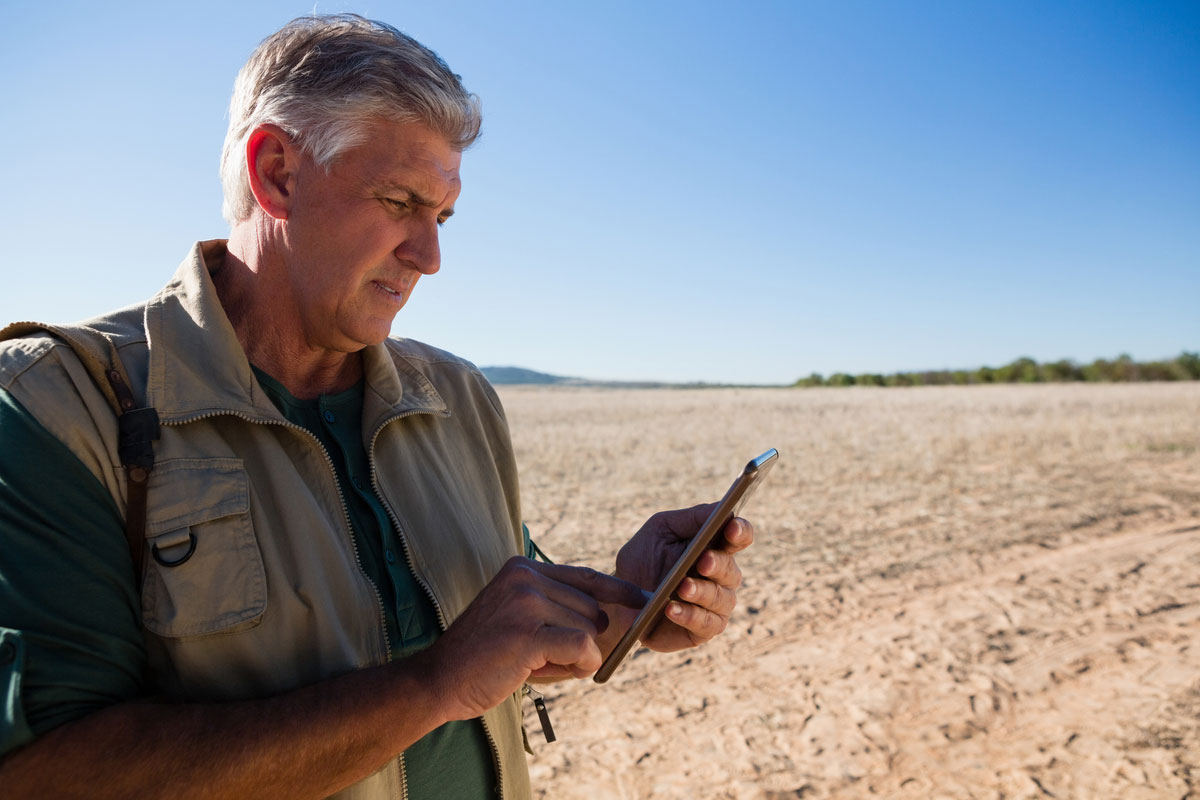
4. Soil
In recent years, soil monitoring has gained significant popularity among environmental sensors. Soil sensors are designed to measure essential factors like temperature, moisture, electrical conductivity, nitrogen, phosphorus, potassium, and pH, all of which profoundly influence crop growth.
These sensors play a crucial role in both smart agriculture and smart irrigation systems, serving as front-end measurement units. They collect data from various locations and transmit it to monitoring platforms for storage, analysis, and informed scientific management practices.
5. Wind Speed and Direction
Environmental sensors are employed to monitor both wind speed and wind direction, serving as indicators of meteorological data. In the context of contemporary agriculture, wind sensors are employed to gauge wind speed and direction, analyze meteorological alterations, and promptly alert farmers, allowing them ample time to reinforce defenses against meteorological catastrophes.
Additionally, airborne pollutants exhibit variations in correspondence to wind speed and direction. The influence of wind on air pollution comprises both wind direction and wind speed. Generally, wind direction determines the path pollutants disperse in, consistently carrying them in the downwind direction, leading to the accumulation of pollutants in that area. Meanwhile, wind speed dictates the intensity and the distance over which air pollution spreads.
Greater wind speed corresponds to heightened atmospheric diffusion and extended pollutant transport distances. Two categories of wind sensors exist: mechanical and ultrasonic. The three-cup wind speed sensor and the wind vane wind direction sensor operate as autonomous measuring instruments, capable of standalone or combined utilization, frequently found in agricultural and meteorological stations.
In contrast, the ultrasonic wind sensor is an all-in-one apparatus that amalgamates wind speed and wind direction measurements and cannot function independently. This type of sensor is frequently employed in domains such as transportation and maritime operations.
6. Rainfall
Environmental sensors play a pivotal role in monitoring precipitation, taking into account two key factors: rainfall and evaporation. Abundant rainfall can readily trigger floods, resulting in the contamination of water resources and the proliferation of solid waste pollution. This, in turn, disrupts farmland ecosystems and jeopardizes the living environment of communities.
Conversely, excessive evaporation can lead to drought conditions, impacting not just agriculture but also industrial production, urban water supply, and the ecological balance. The scarcity of water for plants can result in a significant loss of plant life and disrupt the food chain that relies on it.
The tipping bucket rain gauge currently serves as the most commonly utilized device for measuring rainfall. It boasts remarkable precision and provides data with substantial reference value, which proves advantageous for both meteorological and ecological research. It is frequently employed in conjunction with an evaporation sensor to furnish comprehensive data for analysis and decision-making purposes.
7. Radiation
Environmental sensors play a crucial role in assessing radiation intensity, encompassing solar radiation, photosynthetically active radiation, and ultraviolet rays, all of which exert influence on the meteorological environment. Solar radiation, in particular, has a widespread impact on various aspects of Earth’s development and transformations, necessitating its measurement across multiple domains.
In utilities, monitoring solar radiation facilitates the prediction of energy consumption, including natural gas and electricity usage. In agriculture, it enables the study and anticipation of crop yields and even aids in weather forecasting. Likewise, the intensity of ultraviolet rays also has ramifications for the growth of both flora and fauna.
Excessive ultraviolet radiation can lead to the demise of many organisms in the natural ecosystem, posing risks to human and animal health, and consequently affecting biodiversity and ecological equilibrium. To gauge total solar radiation intensity effectively in the environment, solar radiation sensors are employed, measuring the spectral range from 0.3 to 3μm.
When positioned horizontally facing downward, these sensors can assess reflected radiation, and the inclusion of a scattered light-shielding ring permits measurement of scattered radiation as well.
In contrast, PAR (photosynthetically active radiation) sensors are primarily utilized to measure the portion of natural light crucial for plant life activities, organic matter synthesis, and yield formation, within the wavelength range of 400-700nm. Meanwhile, UV sensors consist of photosensitive elements that convert UV signals into electrical ones, frequently used in tandem with other weather sensors.
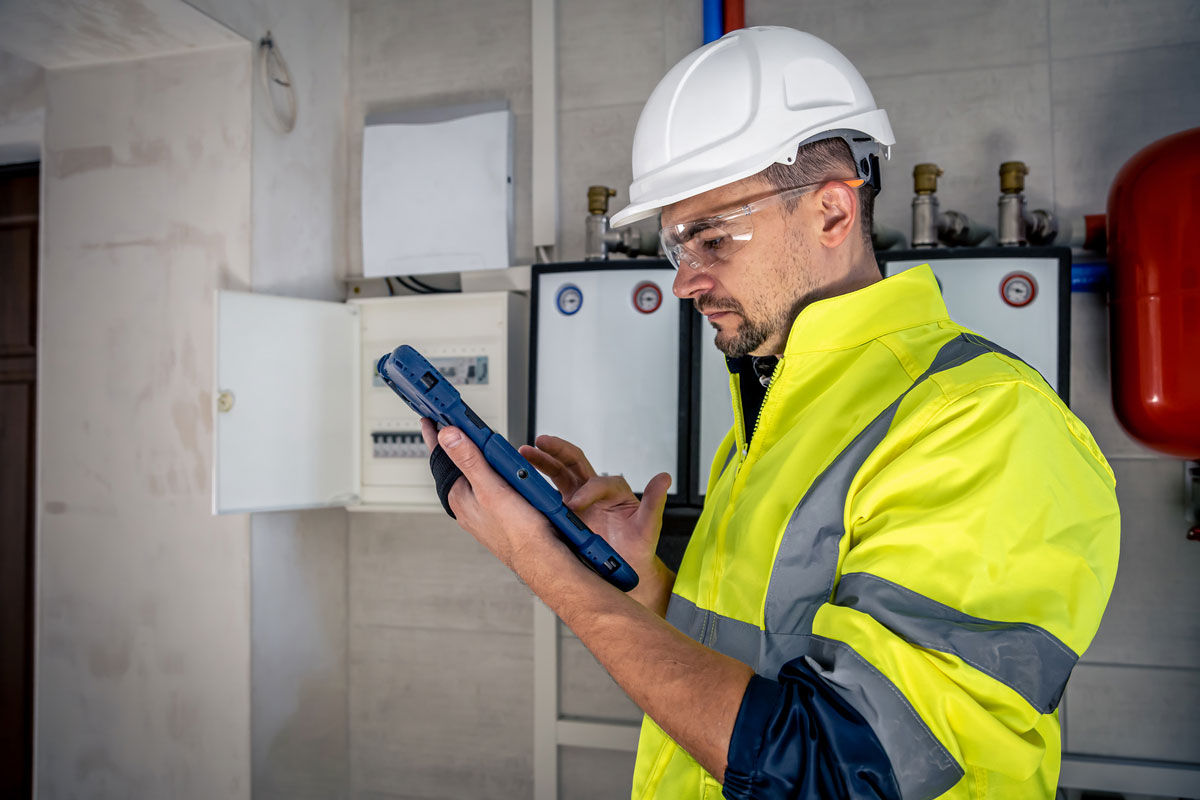
8. Gas
Environmental sensors are essential for the surveillance of diverse gases. The atmosphere contains a wide array of gases, and fluctuations in their concentrations can lead to alterations in the environment.
For instance, elevated levels of carbon dioxide can induce the greenhouse effect, excessive ozone concentrations can negatively impact plant photosynthesis and human well-being, and heightened sulfur dioxide levels can severely degrade air quality.
Thus, the monitoring of gas concentrations through the utilization of gas sensors is imperative, enabling experts to take prompt corrective actions. These gas sensors come in various types, such as CO2, CO, CH4, NH3, O3, SO2, NO2, H2, HCHO, and more.
Some of these sensors are permanently stationed for continuous, long-term monitoring, while others are portable, allowing for monitoring from virtually any location. In potentially hazardous environments prone to flammability and explosiveness, the deployment of explosion-proof gas sensors is a common safety practice.
Suggested article to read: Construction Safety Sensors
9. Water Level and Pressure
Assessing water pressure and liquid levels proves highly effective in evaluating variations in rivers, lakes, and oceans, serving as a valuable means of averting both droughts and floods. Moreover, these metrics serve as crucial reference points for marine researchers as they delve into the study of marine ecosystems and activities.
10. Water Quality
Water constitutes a substantial 70% of our planet’s surface, playing an indispensable role in supporting the growth of both animals and plants. Consequently, monitoring water pollution stands as the fundamental cornerstone of environmental surveillance.
Comprehensive environmental sensors rely heavily on water quality monitoring to gauge contamination levels, employing measurements like pH, EC (Electrical Conductivity), dissolved oxygen (DO), residual chlorine, turbidity, and more. A wide array of water quality sensors are available, with specific selections tailored to distinct purposes.
For instance, the use of a residual chlorine sensor is imperative in the treatment of drinking water, while the aquaculture industry frequently employs dissolved oxygen sensors. In wastewater treatment, essential sensors include pH sensors, conductivity and turbidity sensors, each serving unique roles in maintaining water quality standards.
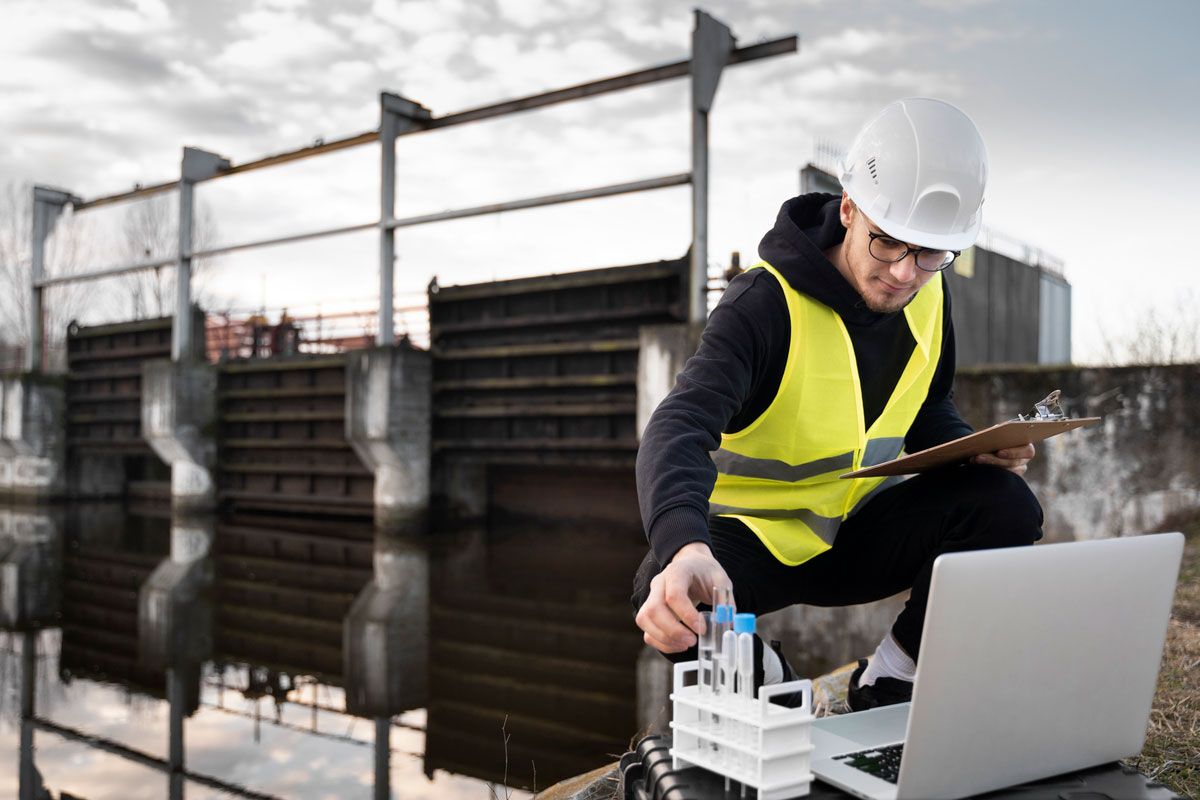
Benefits of Environmental Sensors
Environmental sensors play a crucial role in improving our understanding of the environment, safeguarding public health, and promoting sustainable practices in a variety of industries and applications.
Environmental sensors offer several advantages, including:
Data Accuracy: They provide precise and real-time data, reducing the margin of error compared to manual data collection methods.
Continuous Monitoring: Environmental sensors can operate 24/7, ensuring constant surveillance of changing conditions.
Early Warning: They can detect environmental changes or anomalies quickly, allowing for timely responses to emergencies like natural disasters or pollution incidents.
Cost-Efficiency: Over time, environmental sensors can be more cost-effective than manual data collection, as they require less labor and can cover larger areas.
Remote Monitoring: Many sensors can be accessed remotely, making it possible to monitor distant or hard-to-reach locations.
Data Integration: Sensor data can be integrated into computer systems and analyzed with software, enabling better decision-making and trend analysis.
Long-Term Trend Analysis: Continuous data collection allows for the study of long-term environmental trends, crucial for understanding climate change and other phenomena.
Environmental Regulation Compliance: Sensors help industries and governments monitor emissions and ensure compliance with environmental regulations.
Energy Efficiency: They enable the optimization of energy use in buildings and industrial processes, reducing costs and carbon footprints.
Improved Safety: Environmental sensors can detect hazardous conditions, such as gas leaks or chemical spills, protecting human health and safety.
Suggested articles to read: Sensors in Construction
Sensors for the Monitoring of Buildings
Environmental monitoring within buildings has gained paramount importance, offering key insights into factors like energy efficiency, safety, and cost-effectiveness. The adoption of environmental sensors has been on the rise, primarily focusing on parameters like temperature, carbon emissions, and humidity.
Temperature sensors encompass various types, including thermocouples, resistance temperature detectors (RTDs), thermistors, and Integrated Circuit (IC) sensors. Thermocouples are prevalent due to their broad measurement range, rapid response, and affordability.
However, other temperature sensors may offer superior accuracy or resistance to oxidation. CO2 sensors provide valuable data concerning occupancy, location, and user behavior within a building, contributing to indoor air quality management.
Among the most common CO2 sensors are NDIR (non-dispersive infrared) devices, utilizing light intensity to gauge CO2 concentrations. In the indoor environment, the detection of CO and VOC (Volatile Organic Compounds) has garnered significant attention.
Two prevailing methods for detecting these pollutants are metal oxide semiconductor field-effect transistor (MOSFET)-based sensors and electrochemical-based sensors. Humidity sensors are typically categorized as capacitive or resistive and serve to measure water vapor levels in the air, often represented as relative humidity (relative to temperature) or absolute humidity (expressed as PPM).
Given the remarkable progress in environmental monitoring in recent years, novel technologies are emerging. In this continuously expanding field, the overarching goal is to develop compact, cost-effective, sensitive, and durable environmental sensors.
Suggested articles to read: Smart Sensors in Construction
Environmental Monitoring for Construction Projects
In the construction sector, environmental monitoring entails the measurement and assessment of environmental conditions within and around construction sites. This practice empowers construction and infrastructure projects to ensure adherence to environmental plans, permits, and regulatory requirements while also actively working to mitigate and reduce their environmental footprint.
The careful monitoring and management of environmental factors serve a dual purpose: safeguarding against potential legal claims, which are sometimes obligatory on construction sites, and appealing to conscientious clients who favor responsible contractors.
Thus, the ability to demonstrate a commitment to environmental responsibility by assessing the potential impact of construction activities on the surrounding ecosystem is growing increasingly crucial.
Simultaneously, much like numerous other industries, the construction sector faces persistent pressure to enhance productivity, trim costs, and minimize waste in its operations. Contractors can leverage data collected through monitoring systems not only to implement precise and proportionate measures for minimizing environmental disruption and inconveniences but also as a tool for enhancing overall productivity.
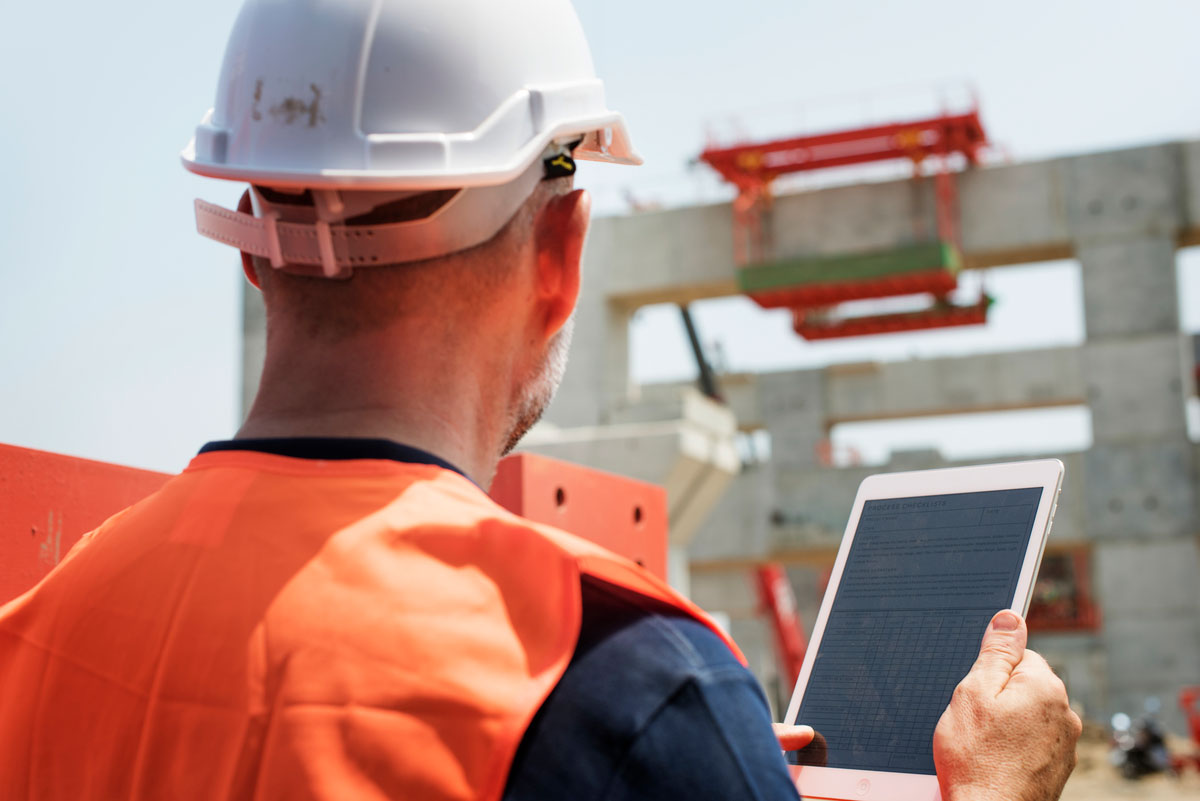
Advantages of a Permanent Monitoring System in Construction
- In contrast to periodic grab sampling conducted by monitoring staff, a permanent monitoring system provides continuous oversight, ensuring that measured parameters stay within acceptable ranges or promptly notifying personnel of rapid fluctuations.
- By eliminating the necessity for time-consuming manual surveys or the engagement of specialized consultants, a permanent monitoring system offers a host of additional benefits.
- Furthermore, it can signal potential hazards in remote locations, enabling teams to allocate resources to safe work sites and minimize unnecessary trips.
The Next-Generation Sensor Technology
While environmental monitoring holds significant importance, it grapples with several challenges that impede its effectiveness. Traditional monitoring approaches often rely on manual sampling, which is not only time-consuming and expensive but also offers limited spatial and temporal coverage. This conventional method hampers our capacity to gather real-time data and make precise assessments of environmental conditions.
To overcome the constraints posed by traditional monitoring methods, the next generation of sensor technology introduces innovative solutions that transform environmental monitoring. These advanced sensors harness cutting-edge technologies like miniaturization, wireless connectivity, sophisticated data processing algorithms, and remote sensing capabilities.
They have the capability to capture a broad spectrum of environmental parameters, encompassing air pollutants, water quality indicators, soil moisture, temperature, humidity, and more. These sensors continuously provide high-resolution data, facilitating superior environmental monitoring across various spatial and temporal scales.
Conclusion
While environmental monitoring holds significant importance, it grapples with several challenges that impede its effectiveness. Traditional monitoring approaches often rely on manual sampling, which is not only time-consuming and expensive but also offers limited spatial and temporal coverage. This conventional method hampers our capacity to gather real-time data and make precise assessments of environmental conditions.
To overcome the constraints posed by traditional monitoring methods, the next generation of sensor technology introduces innovative solutions that transform environmental monitoring. These advanced sensors harness cutting-edge technologies like miniaturization, wireless connectivity, sophisticated data processing algorithms, and remote sensing capabilities.
They have the capability to capture a broad spectrum of environmental parameters, encompassing air pollutants, water quality indicators, soil moisture, temperature, humidity, and more. These sensors continuously provide high-resolution data, facilitating superior environmental monitoring across various spatial and temporal scales. In 2024, the realm of environmental sensors has undergone a profound transformation.
These unassuming devices have quietly assumed the role of guardians for our environment, offering a wealth of data and insights that profoundly influence our understanding, policies, and decisions. As we’ve navigated through this comprehensive guide, we’ve witnessed the remarkable versatility and significance of environmental sensors. From monitoring air quality in bustling cities to scrutinizing water purity in remote streams, these sensors have consistently shown their unwavering dedication to the well-being of our planet and its inhabitants.
In an era marked by the urgency of climate change, pollution crises, and natural disasters, environmental sensors have stepped up to the challenge. They provide us with timely alerts, enabling us to mitigate risks and adapt to changing circumstances. Their data drives scientific discoveries, informs policymaking, and empowers individuals to make eco-conscious choices. Looking ahead, the future of environmental sensors shines brightly. Technological advancements promise even greater precision, accessibility, and integration into our daily lives.
Resources: Econtroldevices | Libelium | Envirotech-online | Renkeer | Azosensors | Econtroldevices | Nihonkasetsu
For all the pictures: Freepik



